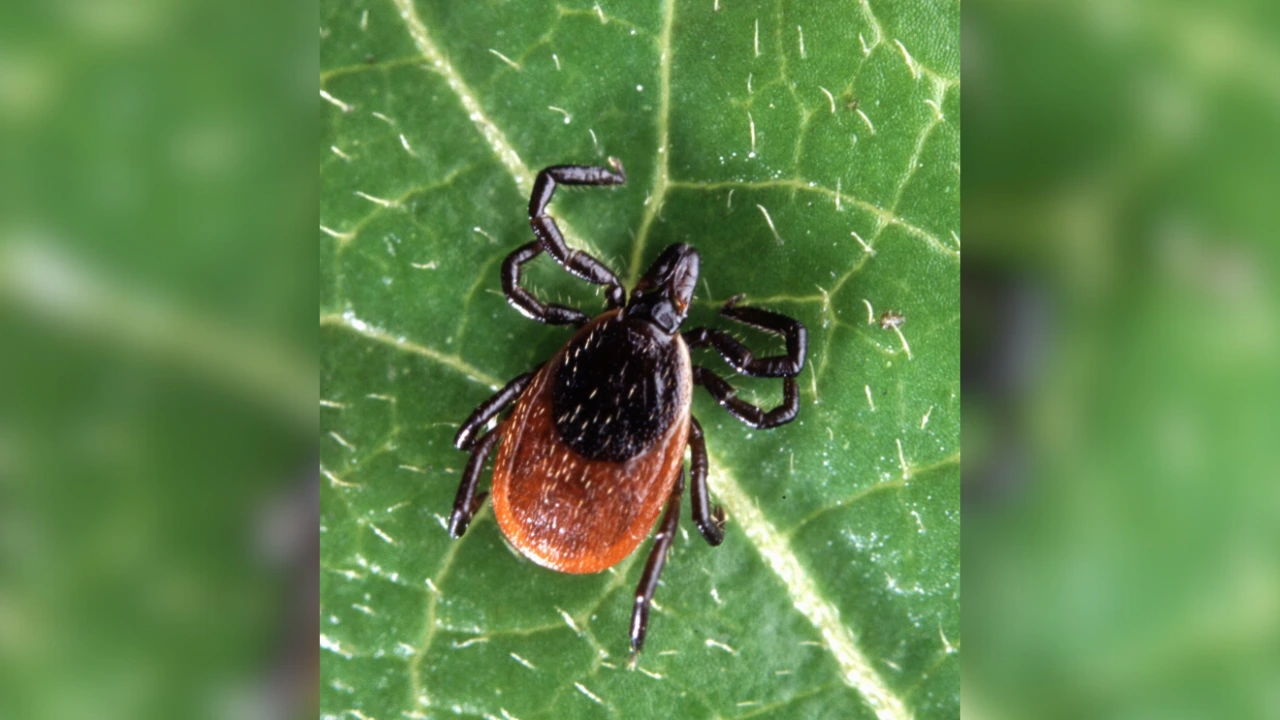Featured Image Credit- Wikipedia
What is Lyme Disease – Lyme disease is a bacterial infection caused primarily by the bacterium Borrelia burgdorferi in the United States, and sometimes by Borrelia mayonii. It is transmitted to humans through the bite of infected black-legged ticks (also called deer ticks), specifically those belonging to the Ixodes species. While it is the most common tick-borne illness in the U.S., cases are rising globally due to climate and environmental changes.
Latest Updates (2025)
- Lyme disease cases are expected to continue rising in 2025, with climate change expanding the range and season of active ticks.
- Over 89,000 cases were reported to the U.S. CDC in 2023, and estimates suggest about 476,000 people may be treated annually.
- Advances in research are leading to more effective antibiotics and improved diagnostic tests, but no human vaccine is approved yet.
- The condition called Post-Treatment Lyme Disease Syndrome (PTLDS) is under study, as some patients experience lingering symptoms even after treatment.
- Awareness and reporting in India are limited, but tick presence has been noted in the Himalayan region, and a few cases have been reported from various states.
Symptoms of Lyme Disease- Lyme disease rash
| Stage | Symptoms |
|---|---|
| Early Localized (3–30 days) | Bull’s eye rash (erythema migrans), fever, chills, headache, muscle aches |
| Early Disseminated | More rashes, facial palsy, severe headaches, joint pain, heart palpitations |
| Late (months–years) | Severe joint pain, swelling, neurological issues (meningitis, neuropathy), arthritis |
- Not everyone develops the classic bull’s eye rash; some may only feel flu-like symptoms.
Diagnosis and Treatment (2025 Guidelines)
Diagnosis
- Physical exam (looking for rash/common symptoms).
- Blood tests but only after several weeks post bite, as early tests may be negative.
- Consider recent tick exposure in endemic areas.
Treatment
- Early treatment is crucial for a full recovery.
- First-line antibiotics: Doxycycline (adults, non-pregnant), Amoxicillin (children, pregnant women), or Cefuroxime.
- For most, a 10–21 day antibiotic course is effective.
- Advanced research is exploring new, more effective antibiotics and treatments for refractory cases.
Disclaimer – Please Consult Your Doctor before Taking Any Medications.
Prevention
- Use insect repellent and wear long-sleeved clothing in tick-prone areas.
- Check for and remove ticks promptly using tweezers.
- Shower soon after being outdoors and examine yourself, your children, and pets for ticks.
Geographic Distribution (USA)
- USA: Most cases occur in the Northeast, mid-Atlantic, and upper Midwest, but Lyme is spreading to new areas as the climate warms.
Read Also- Top Natural Remedies for Psoriasis: Latest Evidence-Based Relief Methods (2025)
Frequently Asked Questions (FAQs) about Lyme Disease
1. What is the first sign of Lyme disease?
- The most unique early sign is the bull’s eye rash (erythema migrans), but not everyone develops it.
2. Can you have Lyme disease without knowing you were bitten?
- Yes. Ticks are tiny and their bites are often painless. Many do not recall a bite.
3. Is Lyme disease always treatable?
- Most cases resolve completely with early antibiotic treatment. Delayed or untreated cases risk lasting neurological or joint symptoms.
4. Is there a vaccine for Lyme disease?
- As of August 2025, there is no human vaccine. Research is ongoing for safe and effective options.
5. What should you do if bitten by a tick?
- Remove the tick with tweezers, clean the bite area, and watch for symptoms. Seek medical advice if symptoms occur.
